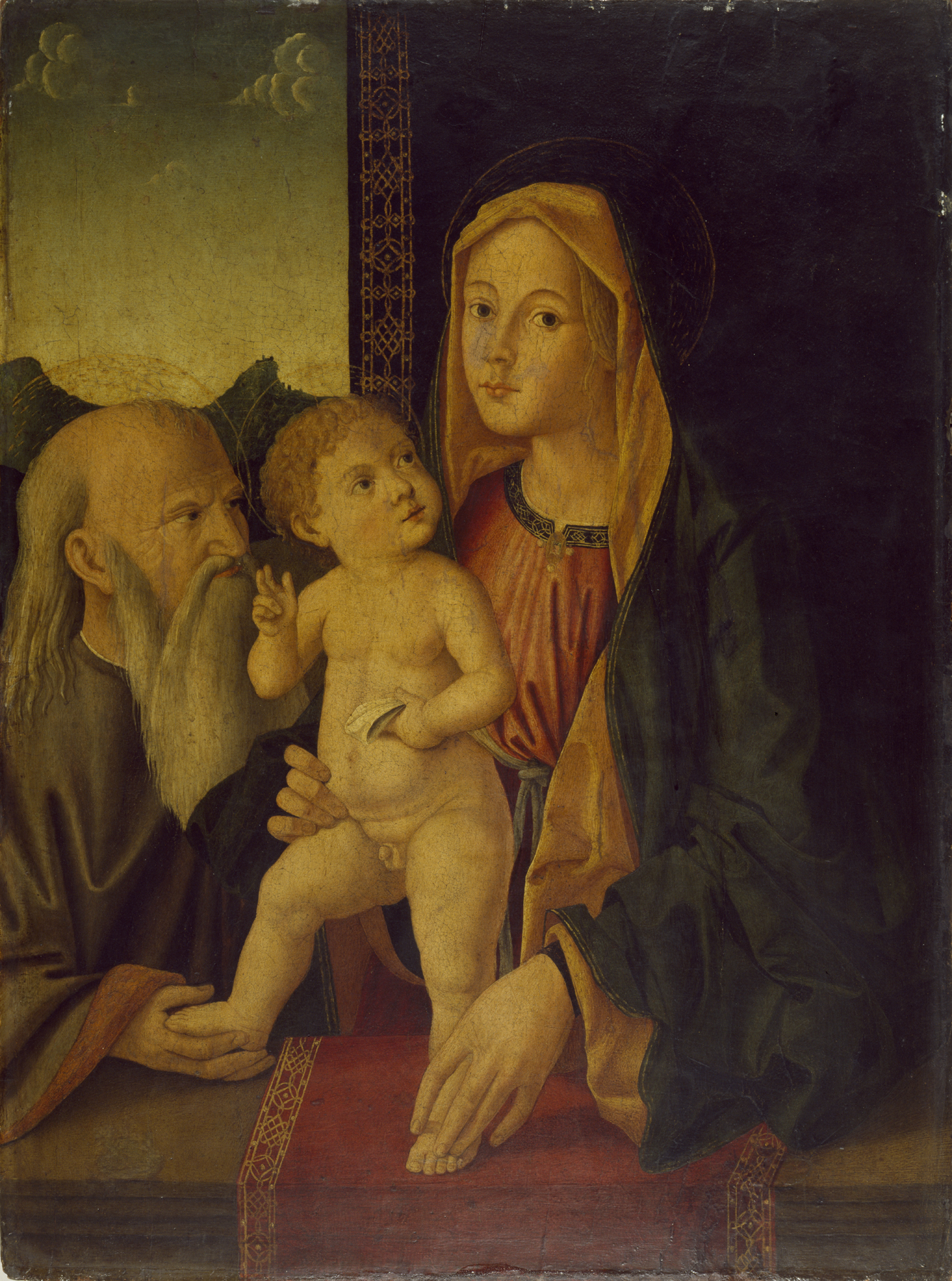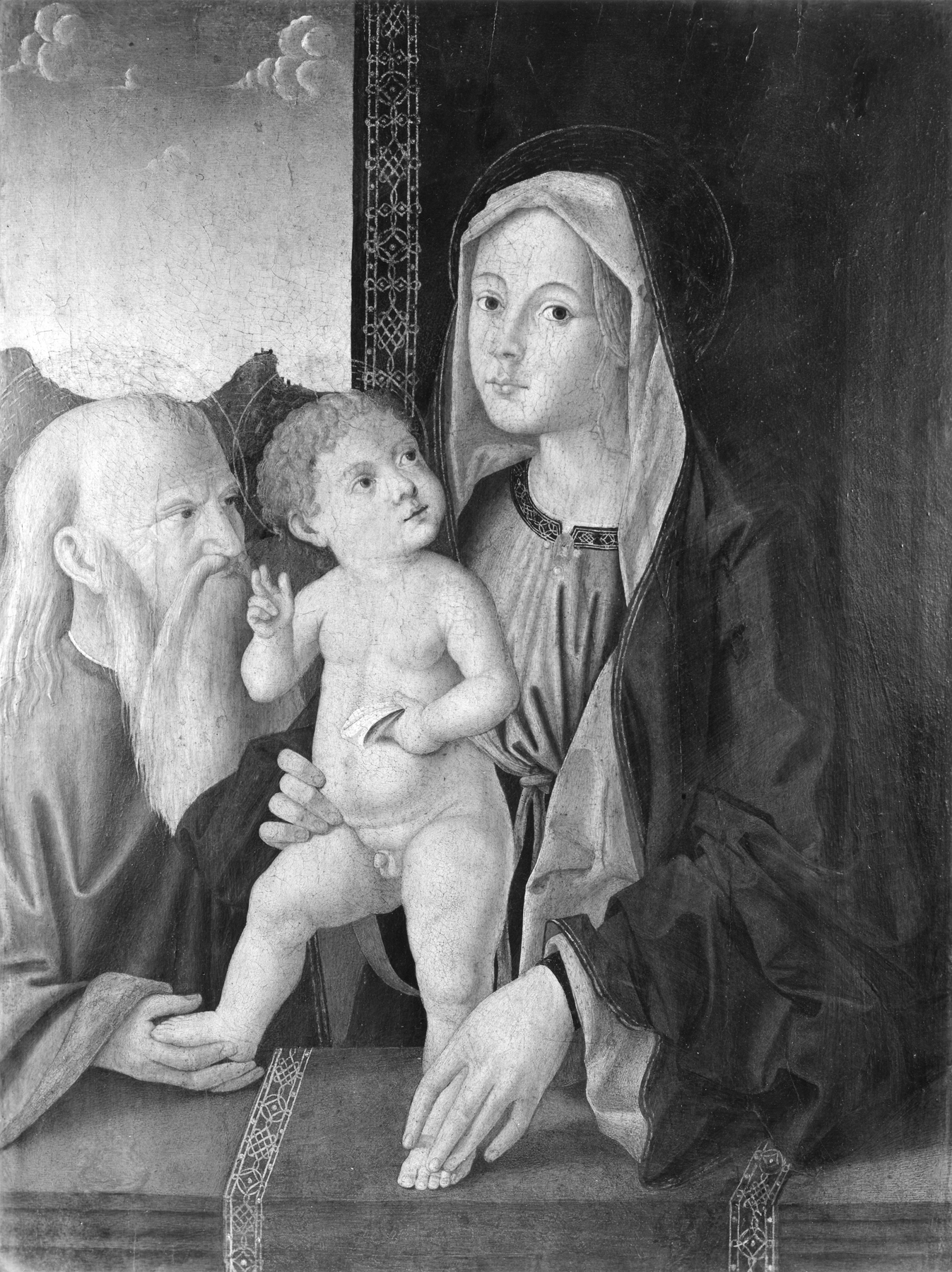The Holy Family
(Renaissance Europe )
This painting is a typical product from the workshop of Marco Palmezzano, one of the foremost painters in the north Italian region of Emilia-Romagna in the late 15th and early 16th century (see also Walters 37.437). Intended for a domestic interior, it depicts an intimate moment in which the Christ Child holds onto his mother’s sash as his father, Saint Joseph, holds onto his little foot. Joseph keeps his eye on the child who remains focused on his mother, while Mary looks out at the viewer with a melancholic gaze suggesting she is aware of her son’s future death at the crucifixion. The figures are placed behind a parapet—keeping them at a defined distance from the spectator—and before an embroidered cloth of honor that signifies their divinity.
Provenance
Provenance (from the French provenir, 'to come from/forth') is the chronology of the ownership, custody, or location of a historical object. Learn more about provenance at the Walters.
Marquess Filippo Marignoli, Rome and Spoleto, until 1898 [mode of acquisition unknown]; Marquess Francesco Marignoli, 1898 [mode of acquisition unknown]; Don Marcello Massarenti Collection, Rome, 1899 [mode of acquisition unknown] [1900 catalogue supplement: no. 10, as manner of Carpaccio]; Henry Walters, Baltimore, 1902, by purchase; Walters Art Museum, 1931, by bequest.
Conservation
| Date | Description | Narrative |
|---|---|---|
| Examination | examined for condition |
Geographies
Italy, Romagna (Place of Origin)
Measurements
Painted surface H: 29 7/16 x W: 21 7/8 x D excluding cradle: 1/2 in. (74.8 x 55.5 x 1.2 cm)
Credit Line
Acquired by Henry Walters with the Massarenti Collection, 1902
Location in Museum
Not on view
Accession Number
In libraries, galleries, museums, and archives, an accession number is a unique identifier assigned to each object in the collection.
In libraries, galleries, museums, and archives, an accession number is a unique identifier assigned to each object in the collection.
37.505




